Among the most beautiful kisses in the history of art is certainly the one that Gustav Klimt (Baumgarten, 1862 - Vienna, 1918) depicted in the painting now in the Österreichische Galerie Belvedere, in the collections of the Upper Belvedere, Vienna. A kiss that fully expressesromantic love, the kind that makes two lovers feel as one, that makes the heart beat whenever one is near the other, that makes one feel protected in the arms of the beloved, and even invincible against everything and everyone, including the adversities that life often confronts us with. A kiss given on the cheek and not on the mouth, but with such transport and gentleness that it expresses with great feeling theidyll to which the two lovers surrender themselves. In an embrace that is pure magic.
Wrapped in agolden aura in an abstract and timeless place, they both rest on a meadow studded with little flowers of various colors, from yellow to blue to violet, mingling with the green of the tender grass. And the ankles of the woman, who unlike the man is kneeling, seem almost to be held by golden threads that hold her firmly to the flowery carpet, lest she fall into the precipice that seems to be beyond the meadow, and to which she also seems to cling with her toes.
The male figure reaches out toward the woman in kissing her, tenderly caressing her face with one hand, while with the other he supports her head, which she turns backward. He wears a long golden tunic that also covers his feet decorated with geometric motifs, particularly wider or narrower rectangles colored black, gray, and white, and in his hair he wears an ivy wreath, which probably refers to classical myth (ivy was in fact an attribute of Dionysus: the deity was also invoked by the appellation Kissos, the Greek name for the plant, for one myth relates that one day Dionysus, abandoned by his mother Semele, took refuge under an ivy plant, while yet another relates that Kissos, a son of Dionysus, died suddenly while dancing in front of his father and the Earth goddess Gaea turned him out of pity into an ivy); however, the plant symbolizes the love bond and fidelity.
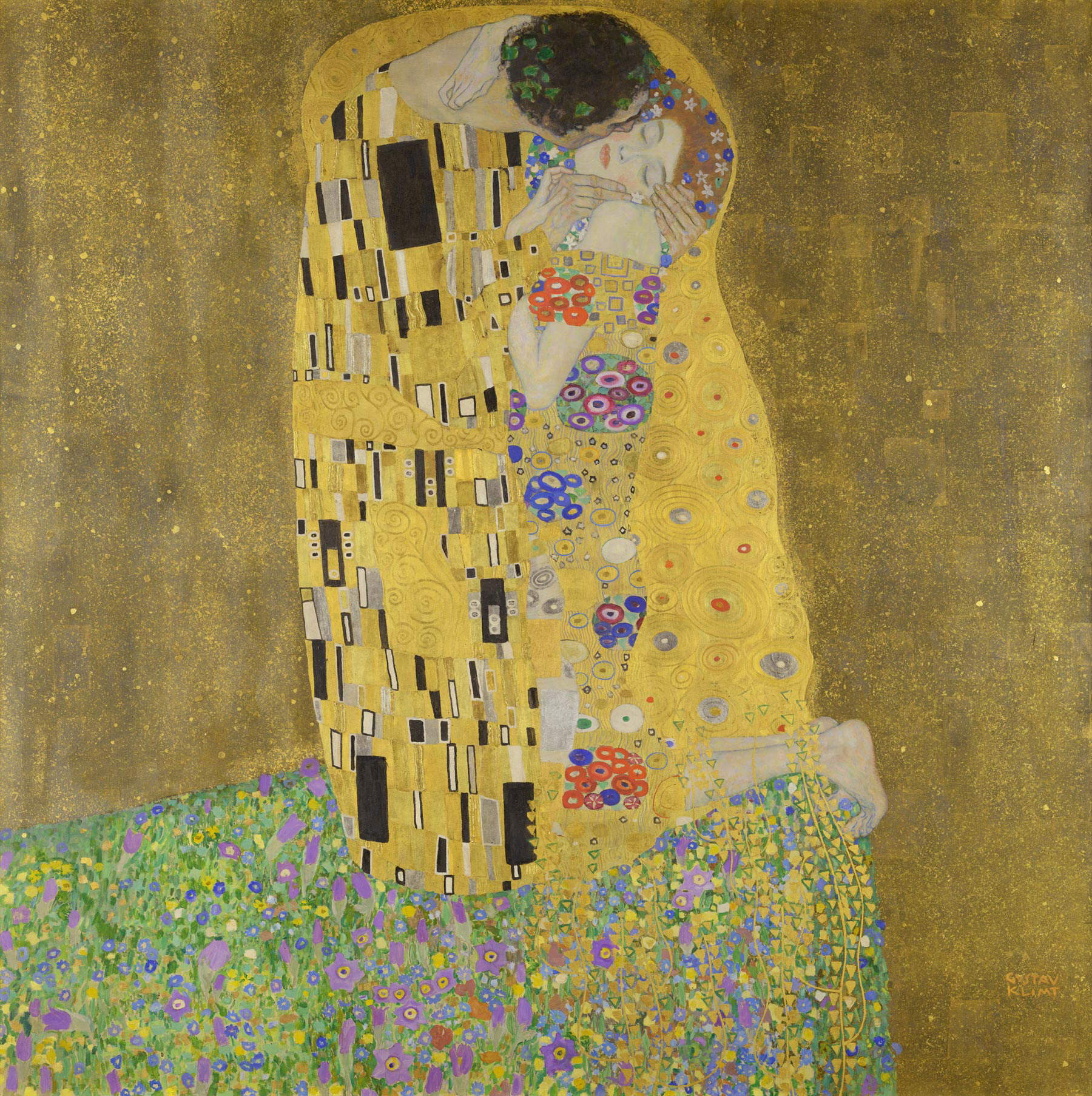
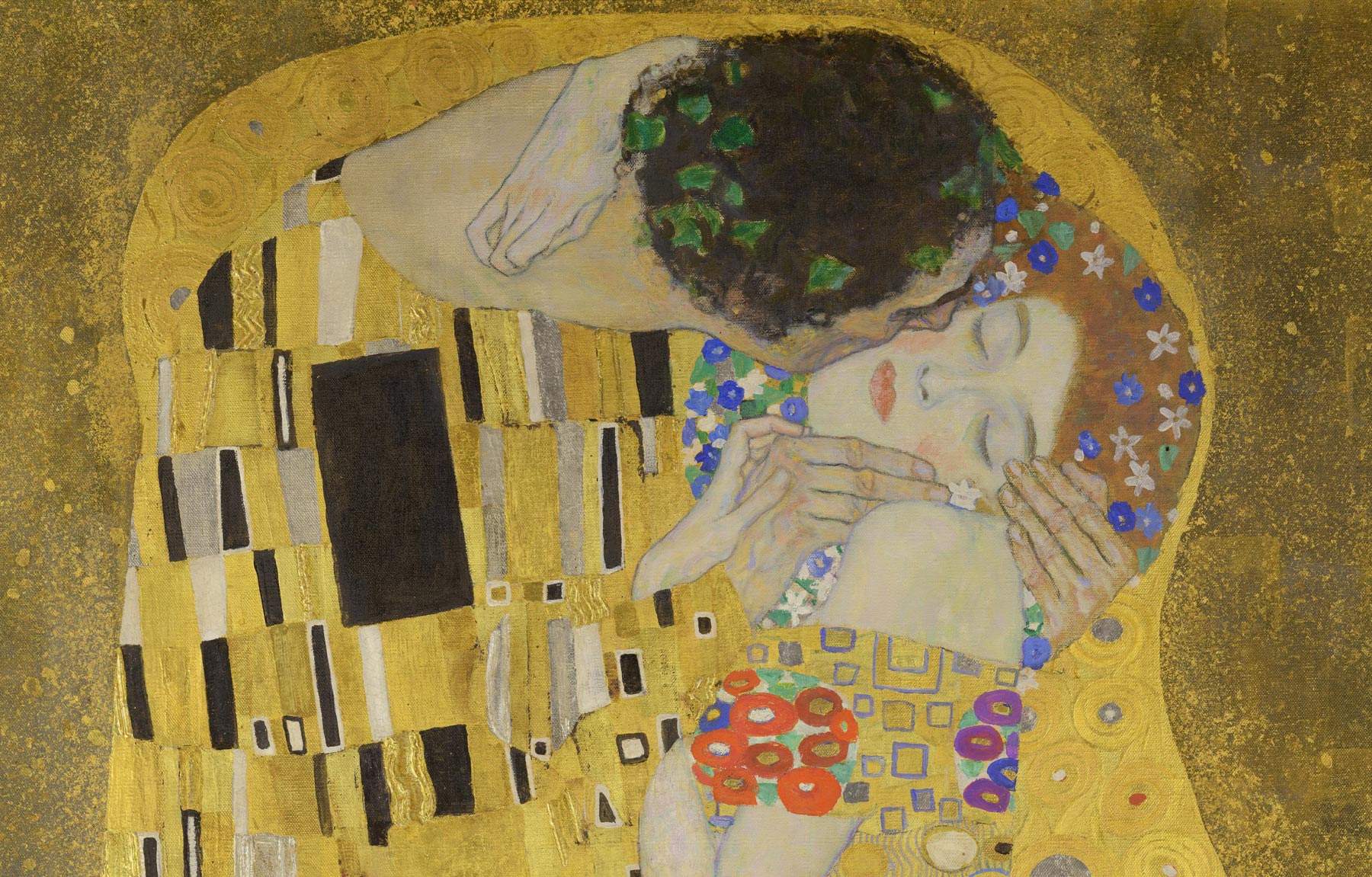
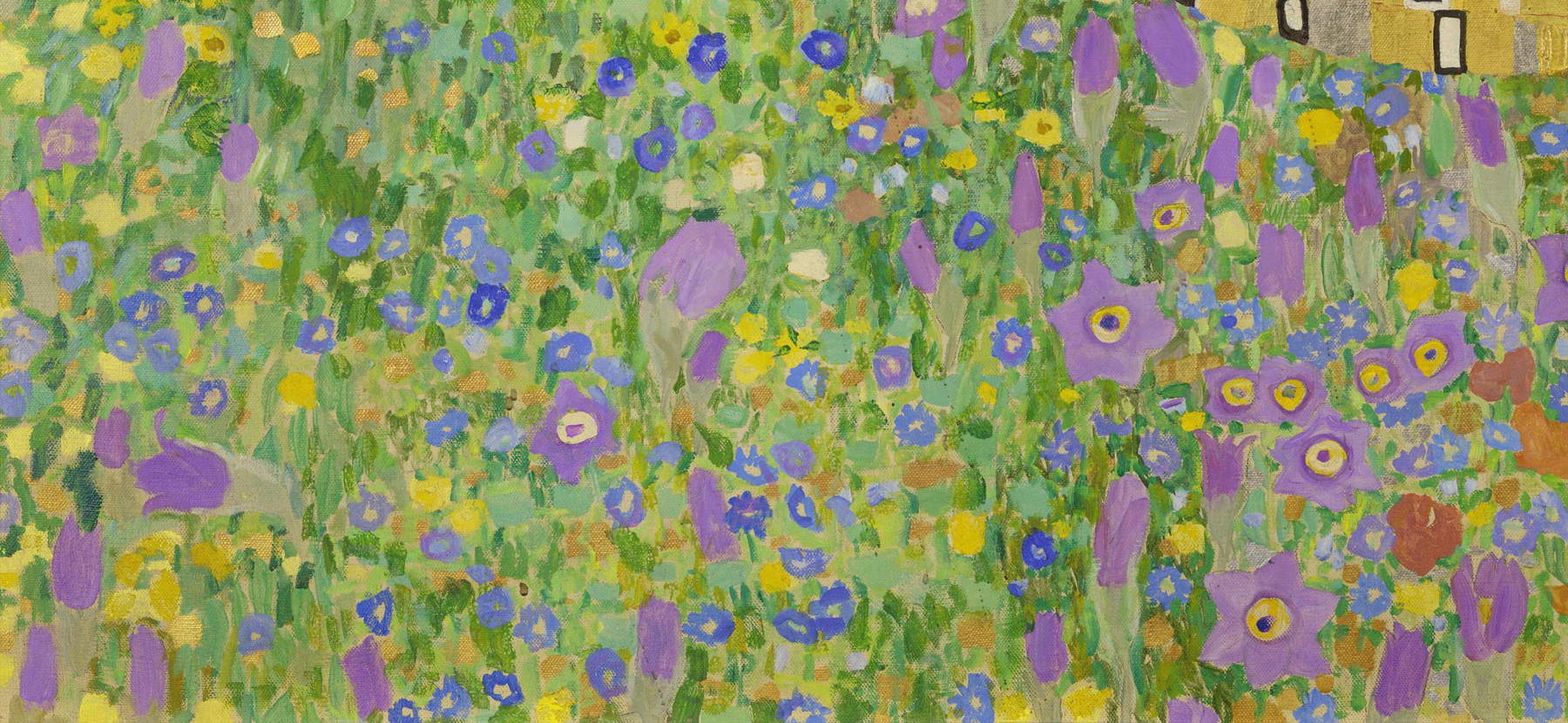
 Gustav Klimt,
Gustav Klimt,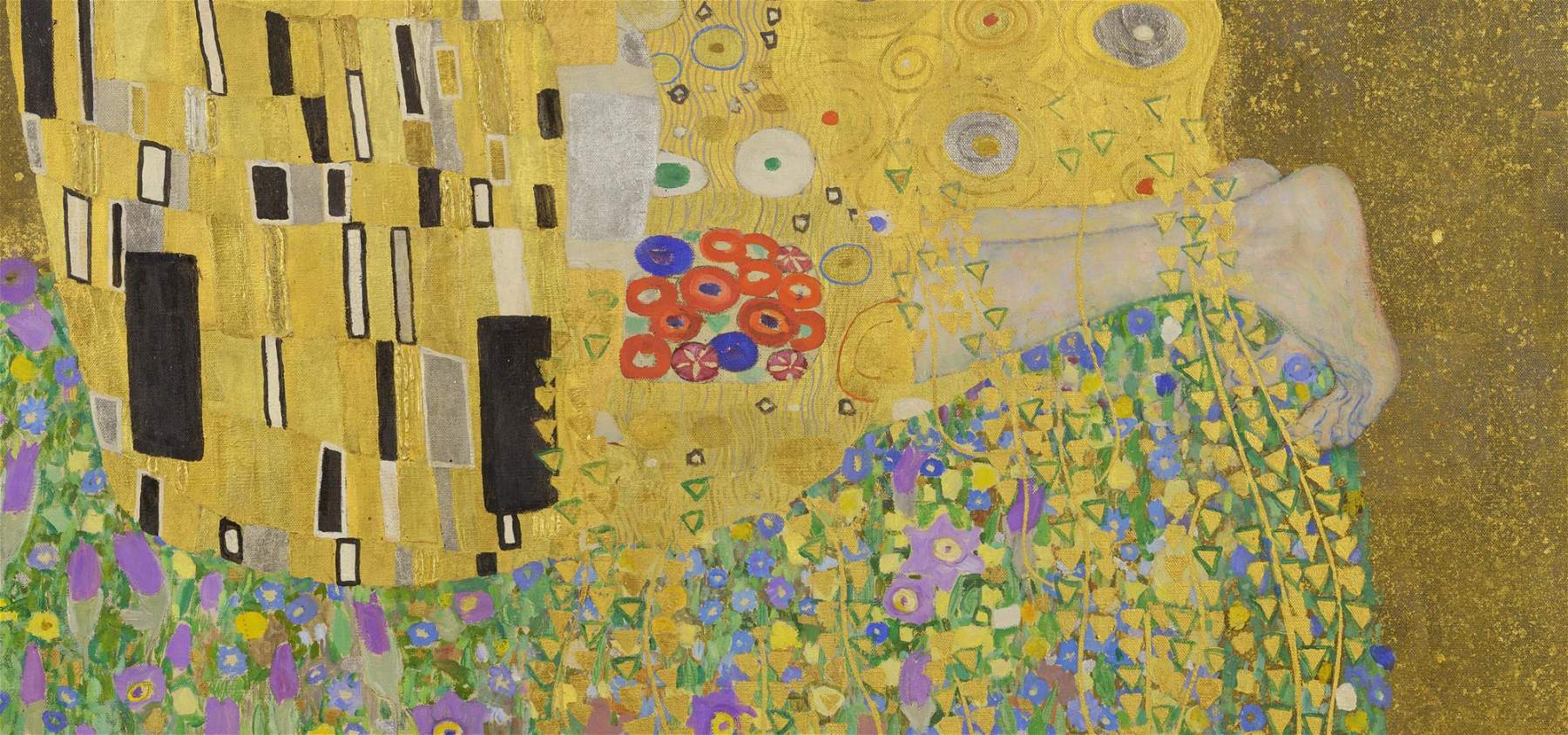 Gustav Klimt, The
Gustav Klimt, The Gustav Klimt, The
Gustav Klimt, The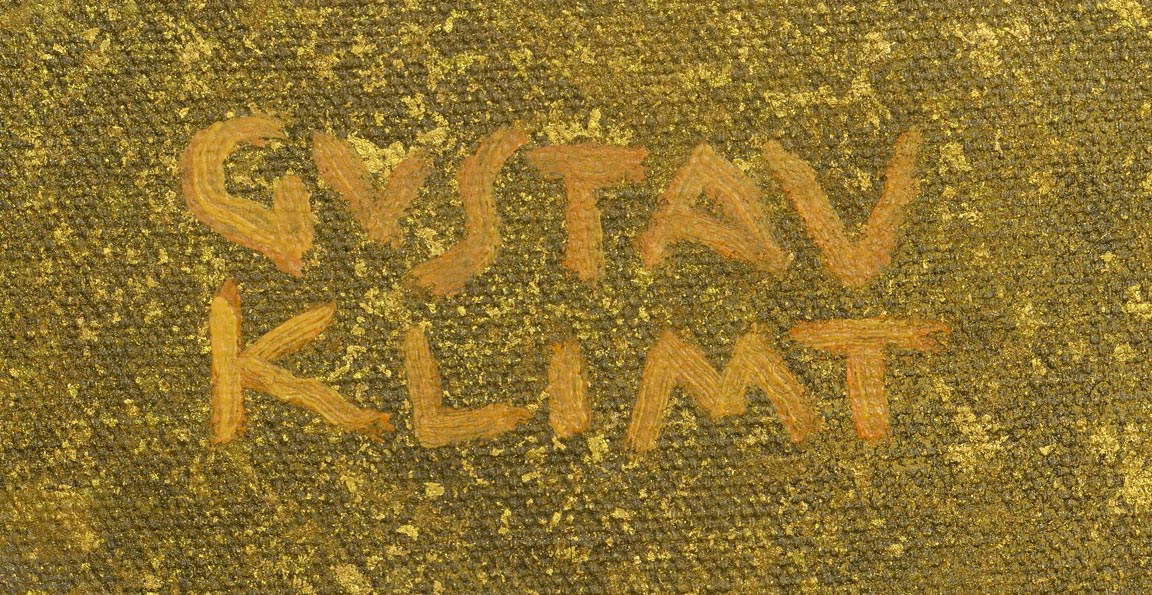 Gustav Klimt,
Gustav Klimt,The female figure surrenders herself completely to the effusion: she is on her knees, with her body attached to that of her beloved, and her face is entirely visible to the viewer, unlike that of the man whose profile is only visible; she keeps her eyes closed, her head reclined backward, her right arm around his mighty neck, and with her left hand she touches the hand of her beloved who is caressing her face. She, too, is wearing a golden dress, however, decorated with circular motifs forming small colorful clusters of red, violet and blue, and around her head small flowers that seem to ascend, through her body, from the flowery meadow on which she rests. The flowers, a symbol of fertility, actually seem to compose the entire figure of the woman, from bottom to top. The two lovers present contrasting elements in relation to each other: in addition, as noted above, to the decoration of the tunics, we note the man’s mightiness and the woman’s slender body, his gnarled hands and her tapering hands, her light, glowing skin and his darker skin. However, despite these contrasts, the masculine and feminine universes come to interpenetrate harmoniously through the power of love that unites everything and transcends all distinctions between the two sexes.
Examining one of his favorite artists, neuroscientist Eric Kandel argues that Klimt began to introduce biological symbols into his art: specifically, rectangles symbolize spermatozoa, while ovals symbolize eggs. This is seen, for example, Kandel says, in Danae, where among the golden rain are rectangles, while on the other side of the painting are oval shapes, which he interprets as embryos, fertilized eggs. And so Danae, through her generating force, is the one who generates the first stage of life. According to the neuroscientist, the culmination of this symbolism we can notice precisely in the Kiss. “Klimt intensifies the sensuality of the painting by expanding the use of these symbols at the expense of realistic decoration,” Kandel writes. "On the lovers’ robes, as well as on the flowery surface, symbols are used as ornamentation. The rectangle that Klimt uses in Danae as a phallic symbol proliferates in the Kiss on the man’s tunic, while the woman’s dress comes alive with ovular and floral symbols. These two defined fields of sexual symbols become a union of opposites in the vibrant golden robe that is their common ground. Klimt also indirectly represented here the powerful and harmonious erotic feeling."
The Kiss was created in 1907-1908, at the height of Klimt’s Golden Age , a period that can be tentatively placed between 1901 and 1909 and is so named because it is characterized by the extensive use (and the Kiss is a significant example of this), of gold leaf applied to canvas to make certain parts of his works luminous and brilliant. As Franz Smola, one of Klimt’s foremost experts, explains, the background of the Kiss was in fact made of thin metal foils of warm gold color: technical investigations recently carried out on the painting have shown that the entire surface of the background is covered with a layer of brass foil, or so-called metal leaf. The artist passed over the metal surfaces a thin layer of oil glaze, to reduce its shine, and over it again he applied an oil emulsion that was to serve as a glue, on which he then dropped flakes of gold leaf from above, keeping the canvas lying on the ground. He probably used a technique peculiar to Japanese lacquers, in which the gold flakes were blown or tapped onto the lacquered surfaces. The areas of the painting where bright gold ornamental motifs appear, particularly on the clothes, were also abundantly covered with metal foils. This means that, before starting the painting, Klimt had already planned the composition exactly, because in many parts it was necessary to respect the boundaries demarcated by the metal-coated surfaces. This special technique using gold and other metal foils together with oil colors was used by the artist between 1901 and 1909 in about fif teen paintings among the fifty-five works executed during the same period. The “gold” paintings thus represent less than a quarter of Klimt’s output in those years, and it is these paintings, including the Kiss, that are considered among the most significant of Klimt’s entire output.

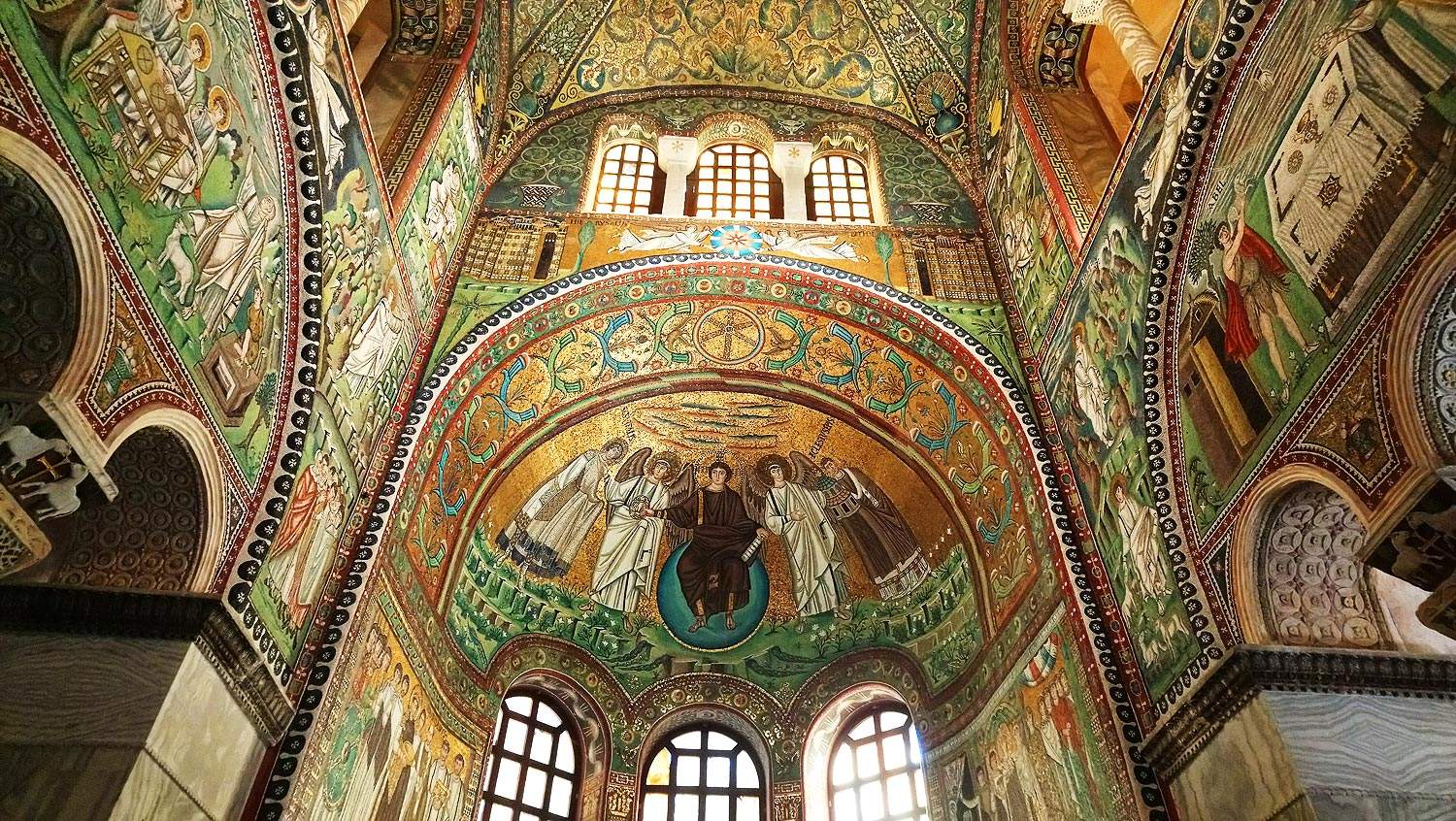
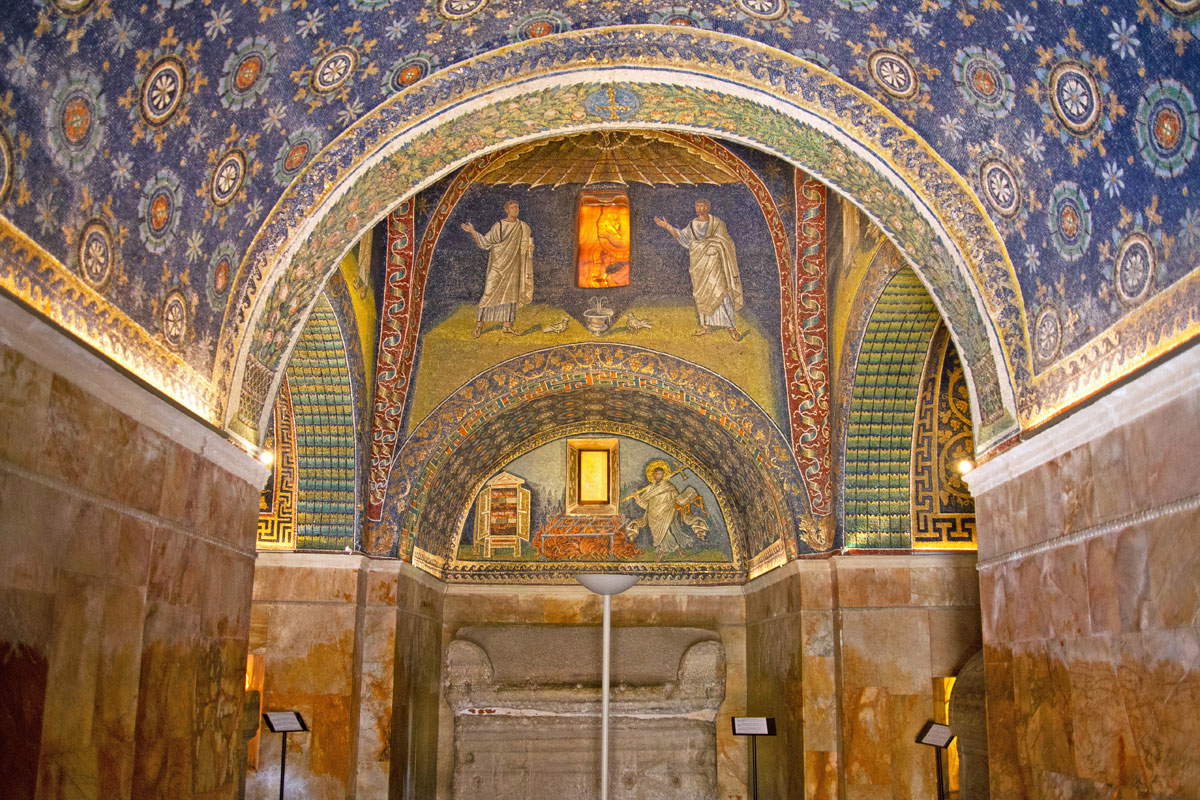
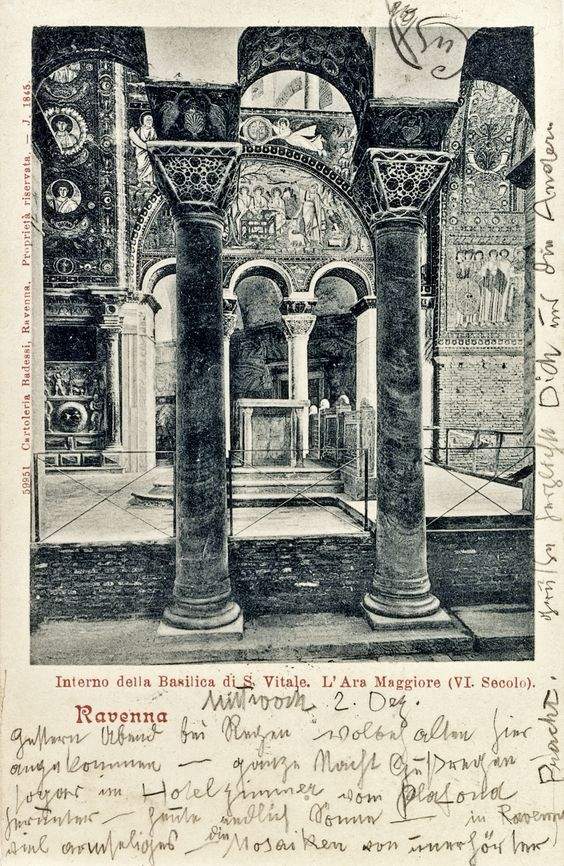
It should also be kept in mind that the master of the Viennese Secession had the opportunity to visitItaly several times and in particular had the chance to stay in 1903 in Ravenna, in the city famous for its Byzantine mosaics, being deeply impressed and fascinated by its famous monuments. In his travel reports, he tells of seeing in Ravenna “mosaics of unprecedented splendor.” Maximilian Lenz, Klimt’s traveling companion on the Italian tour of 1903, noted when he arrived in Ravenna that “for Klimt it is a decisive moment: the golden rutilant mosaics of the Ravenna churches arouse in him an incredible and decisive impression. From then on, pomp and a certain rigid opulence entered his sensitively rich art [...]. Klimt was truly shaken. He did not externalize it, but you could see it clearly.” And it was precisely the Ravenna mosaics that probably inspired the golden, ornate tunics of the two lovers.
The space where the couple indulges in the romantic kiss, in the center of a perfect square, on a flower meadow, in anidyllic atmosphere can also be considered a hortus conclusus where eros and myth interpenetrate. However, the presence of the flower meadow has also brought to mind the shore of a lake, theAttersee, where Klimt and his muse and close friend Emilie Flöge (Vienna, 1874 - 1952) really used to go together every summer. Even the golden threads that wrap around the female figure’s ankles in the painting have been seen as seaweed, and the golden background as the water of the lake itself.
Even the identification of the two figures is uncertain, although many scholars and art historians agree that the woman kneeling in the man’s arms is indeed Emilie, with whom Klimt had the longest and most sincere friendship (and probably love) relationship of his life. In addition to loving each other affectionately, the two also esteemed each other professionally: Emilie loved the way Gustav painted (the Portrait of Emilie Flöge now in the Wien Museum dates from 1902-1903), while he was fascinated by her entrepreneurial flair as a fashion entrepreneur. Among other things, the tunics Emilie used to wear recall those worn by the two protagonists in The Kiss. As a somewhat unconventional fashion designer for the time, as she moved away from corsets in favor of more comfortable, soft dresses decorated with floral prints and geometric elements, she had founded in 1904, together with her two sisters Pauline and Helene, the Schwestern Flöge fashion salon in Vienna: a true haute couture atelier frequented by the Austrian capital’supper middle class.
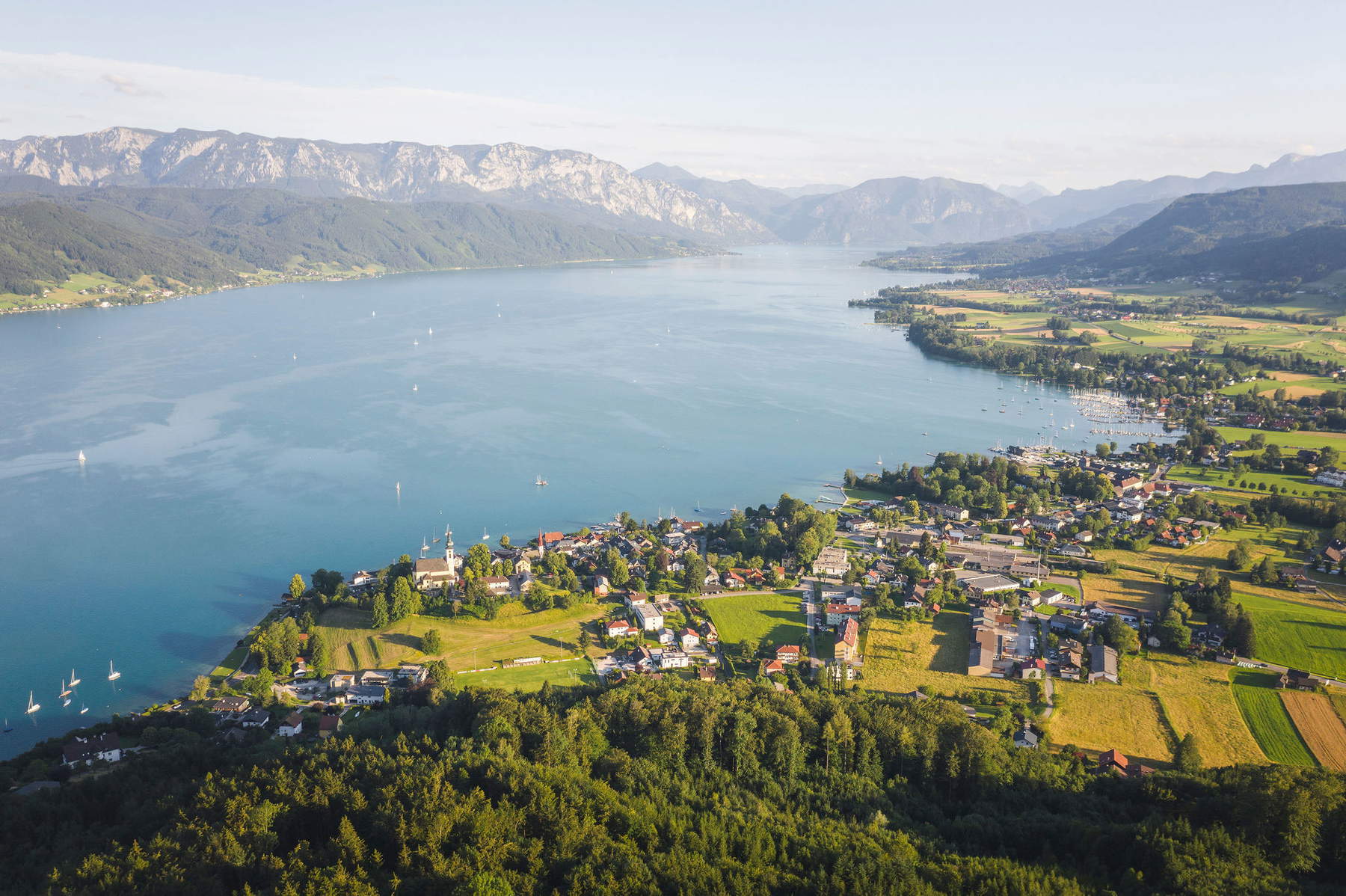
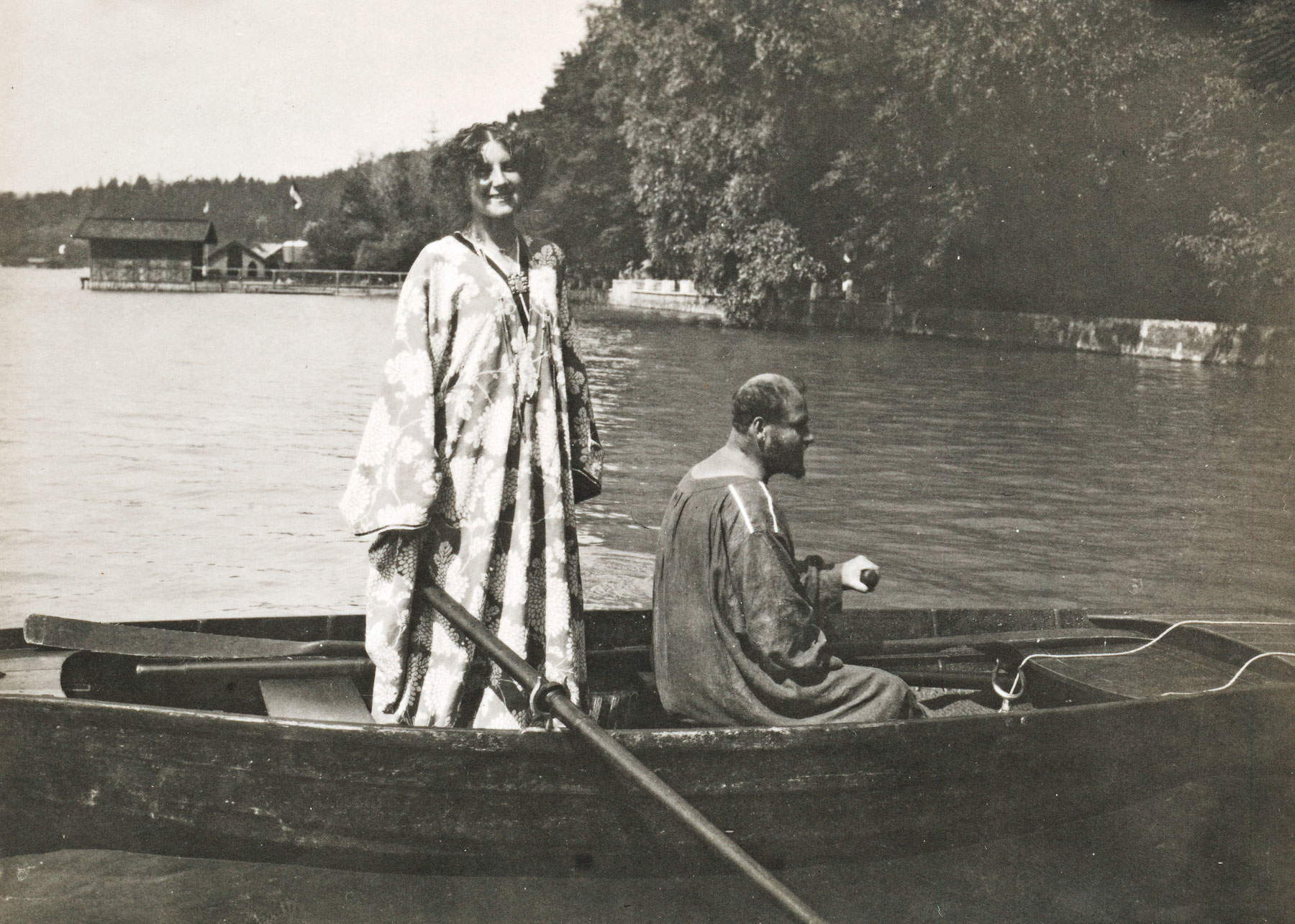
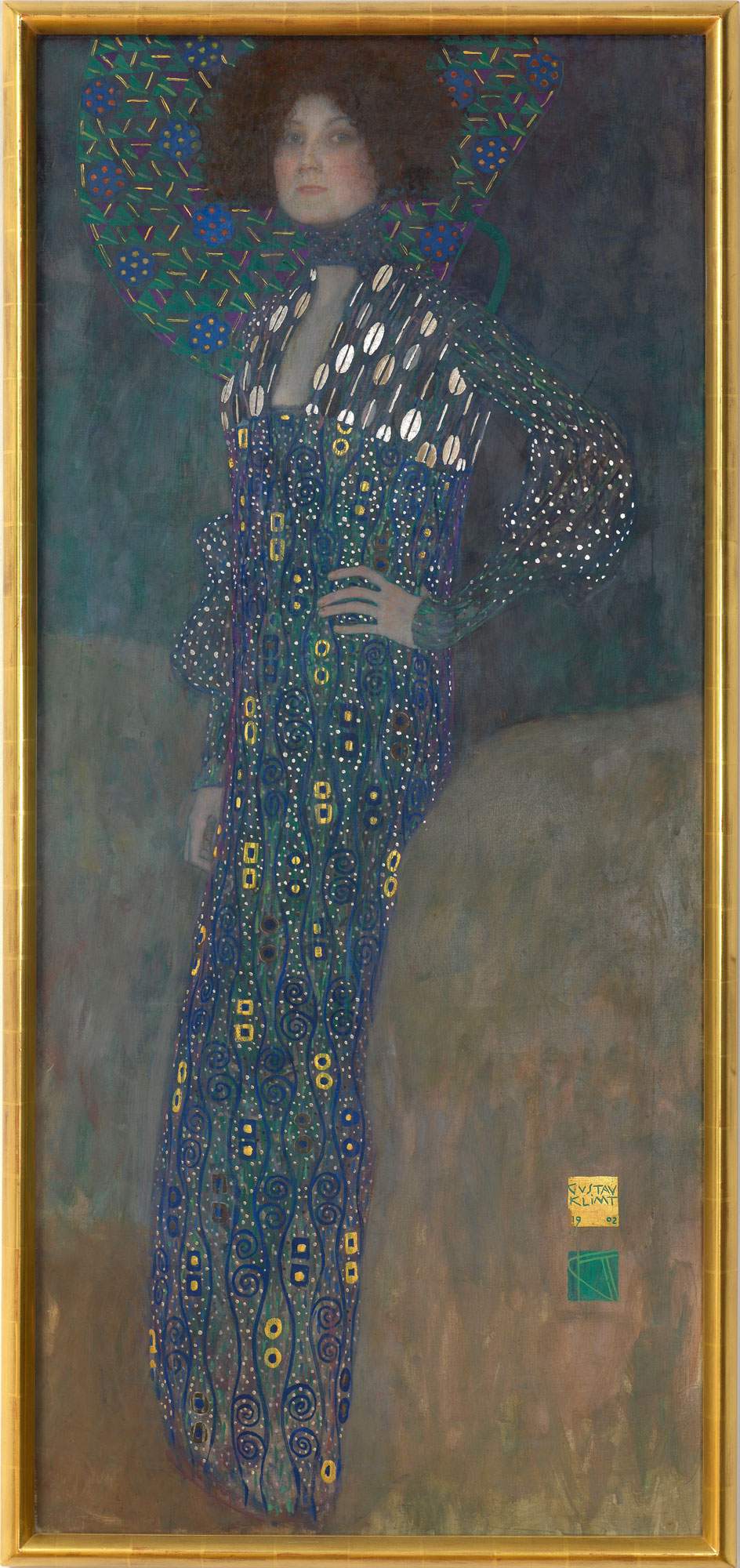
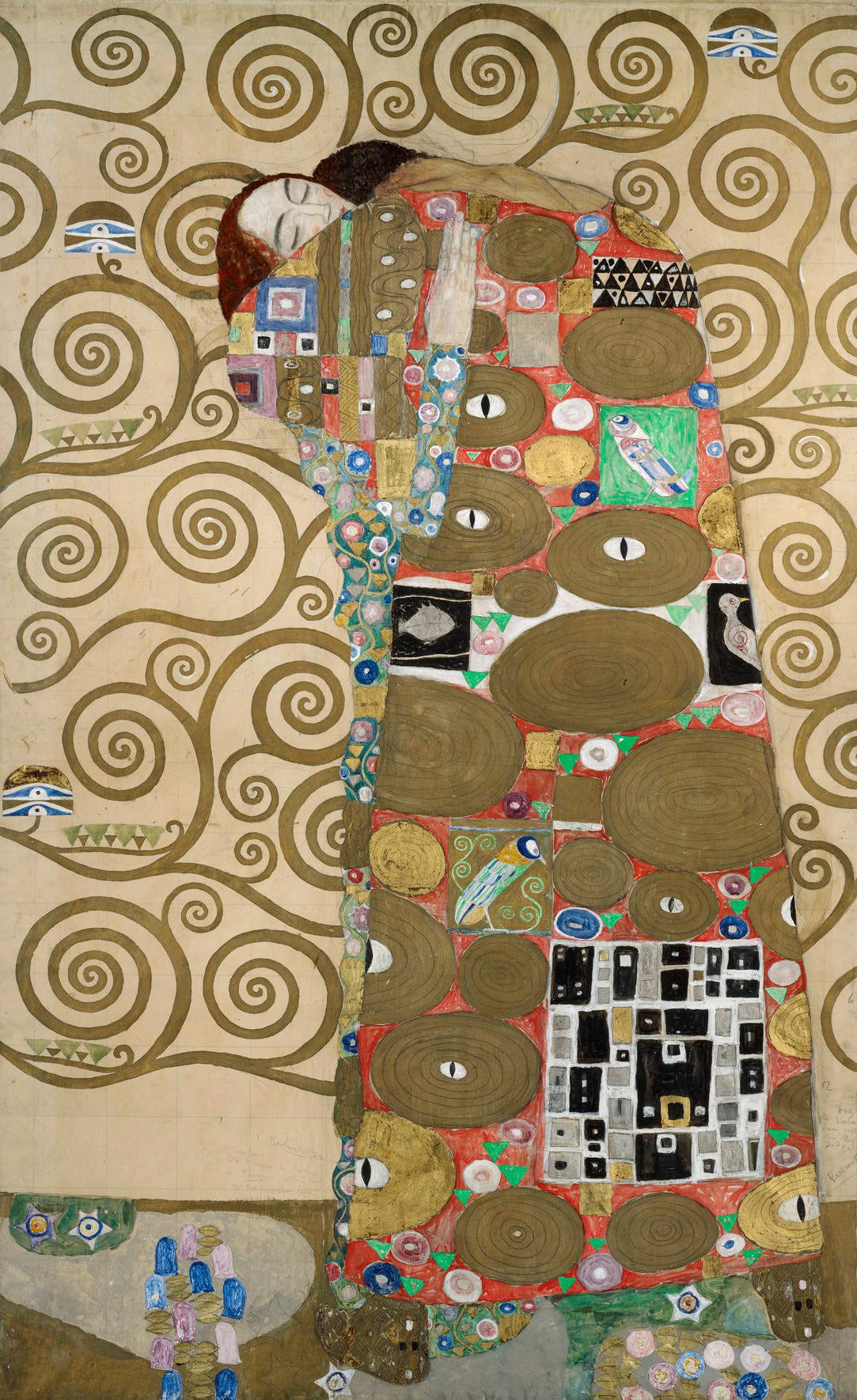
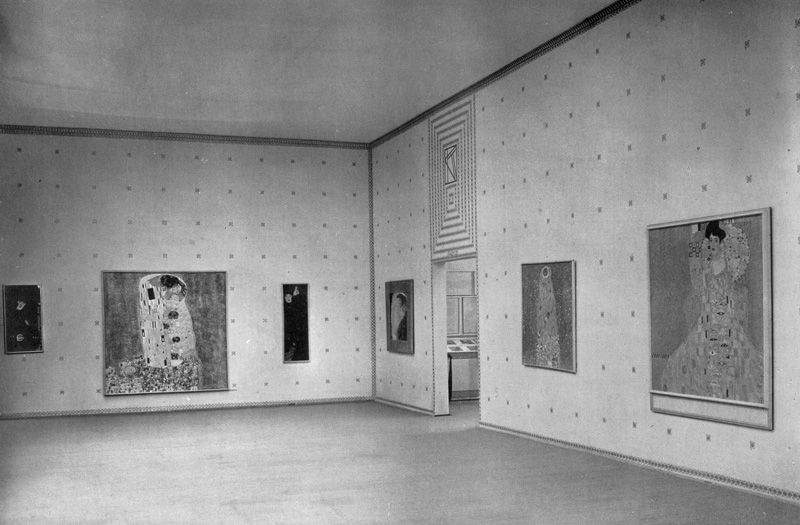
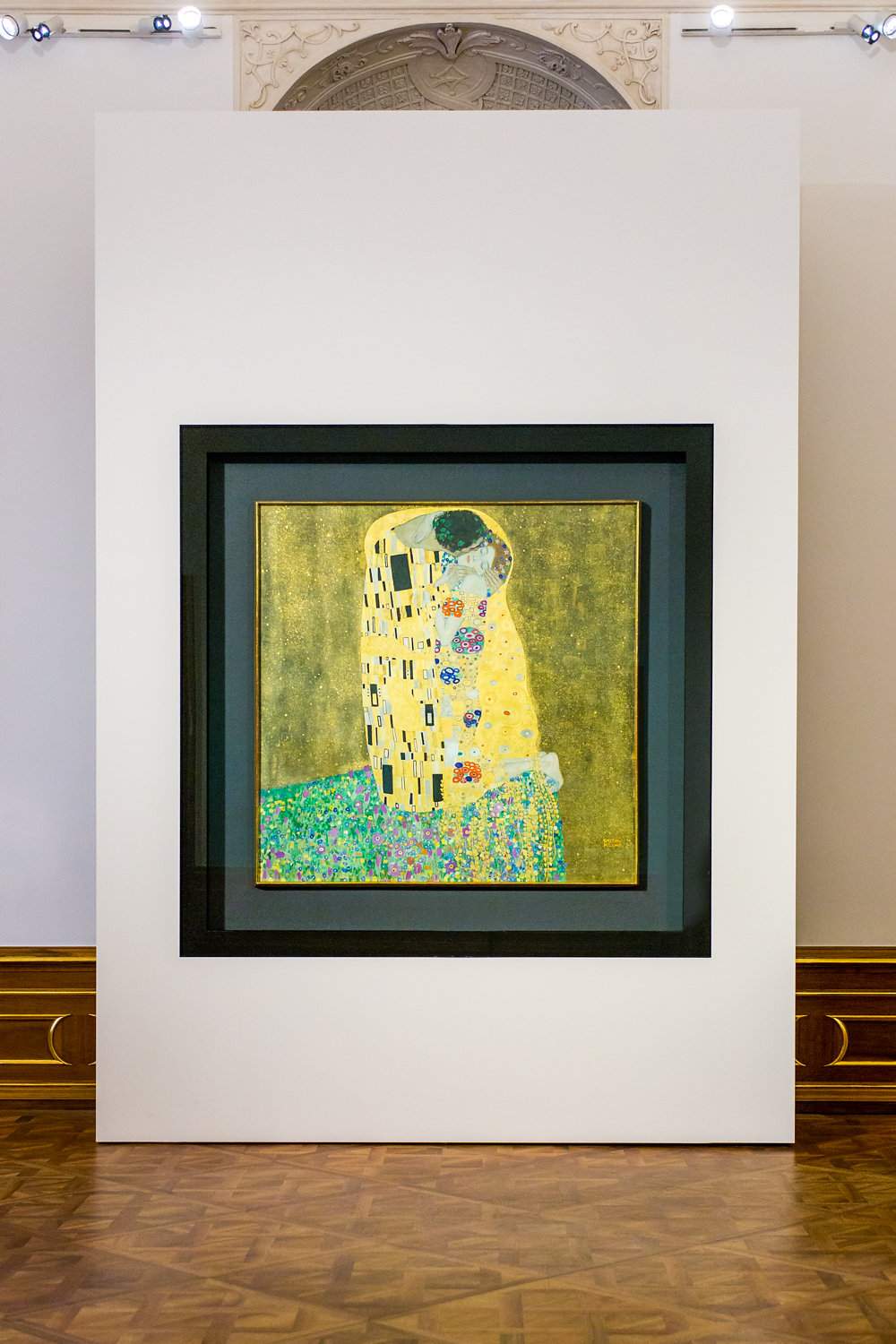
The theme of the pair of lovers embracing is not depicted only in the Kiss, but also in his other famous works, such as in theEmbrace for the mosaic frieze at the Stoclet Palace in Brussels, in which again the woman abandons herself in the arms of the man and in which we see a strong decorativism in both the robes and the background, and in the Beethoven Frieze, in the part entitled This Kiss to the Whole World, where a naked man and woman embrace in a strong embrace achieving absolute happiness,absolute love.
The Kiss was first exhibited at the Kunstschau in Vienna in 1908, forming one of the centerpieces of the major exhibition project organized by the Klimt Group. It was displayed in a room, along with another of his masterpieces, The Three Ages of Woman, set up by Koloman Moser that housed sixteen Klimt paintings and which writer Peter Altenberg called “the temple erected by Gustav Klimt to modern art.” The Ministry of Education purchased the Kiss on behalf of the Moderne Galerie for 25 thousand crowns, and before delivering the painting in the summer of 1909, Klimt made minor changes because he was not fully satisfied with his work. The work also, until 1911, was titled Couple of Lovers: in fact, it was in the Italian-language catalog of the International Exhibition of Fine Arts in Rome, which was held precisely in 1911, that the painting first appeared as the Kiss, and that is how it would be named from then on. Today the Kiss is one of the most iconic works in art history, so much so that it is also reproduced on everyday objects. A masterpiece that enchants and is loved by all today.
Warning: the translation into English of the original Italian article was created using automatic tools. We undertake to review all articles, but we do not guarantee the total absence of inaccuracies in the translation due to the program. You can find the original by clicking on the ITA button. If you find any mistake,please contact us.